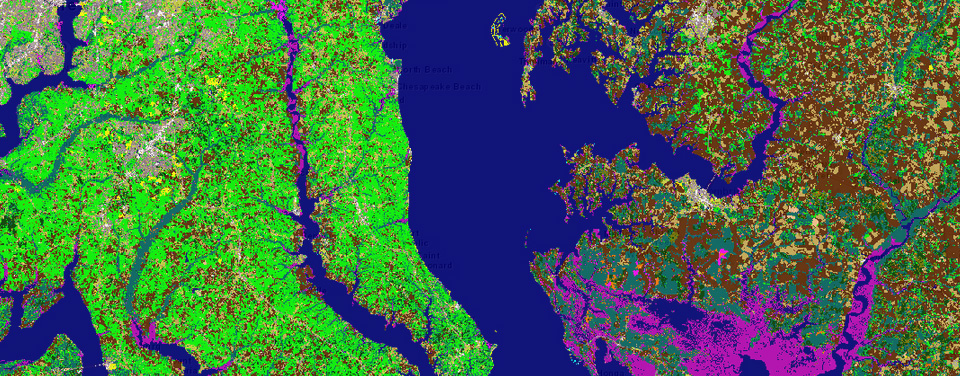What is the difference between land cover and land use?
Land cover indicates the physical land type such as forest or open water whereas land use documents how people are using the land

By comparing land cover data and maps over a period of time, coastal managers can document land use trends and changes.
Land cover data documents how much of a region is covered by forests, wetlands, impervious surfaces, agriculture, and other land and water types. Water types include wetlands or open water. Land use shows how people use the landscape – whether for development, conservation, or mixed uses. The different types of land cover can be managed or used quite differently.
Land cover can be determined by analyzing satellite and aerial imagery. Land use cannot be determined from satellite imagery. Land cover maps provide information to help managers best understand the current landscape. To see change over time, land cover maps for several different years are needed. With this information, managers can evaluate past management decisions as well as gain insight into the possible effects of their current decisions before they are implemented.
Coastal managers use land cover data and maps to better understand the impacts of natural phenomena and human use of the landscape. Maps can help managers assess urban growth, model water quality issues, predict and assess impacts from floods and storm surges, track wetland losses and potential impacts from sea level rise, prioritize areas for conservation efforts, and compare land cover changes with effects in the environment or to connections in socioeconomic changes such as increasing population.